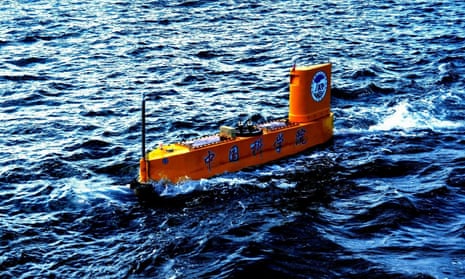When a Chinese submarine launched a rocket recently, it was not test-firing a weapon of mass destruction. In fact, scientists were experimenting with an unmanned survey vessel able to explore storms from the inside. Technically the small vessel is a semi-submersible as it cruises just below the surface. It was developed at China’s Institute of Atmospheric Physics as a rugged research platform with long endurance, able to go anywhere and withstand any sea state.
Sounding rockets or rocketsondes are an alternative to weather balloons, carrying sensors to high altitude to measure temperature, pressure and especially windspeed. This is the first time a rocketsonde has been mounted on a submersible. The novel combination allows researchers to measure sea surface temperature while profiling the wind conditions above at the same time. This is important as it is the transfer of heat from the sea which powers tropical storms.
The new arrangement will cost less and be usable in more sea conditions than traditional methods of measurement, according to lead researcher Hongbin Chen. In particular, submersible-launched rocketsondes could probe the three-dimensional structure of typhoons and hurricanes without the need to send manned ships or aircraft into the teeth of a storm.

Comments (…)
Sign in or create your Guardian account to join the discussion